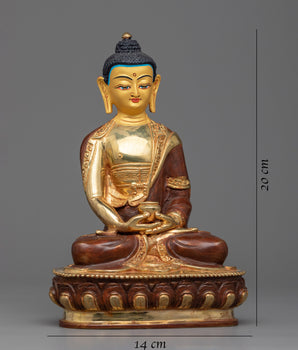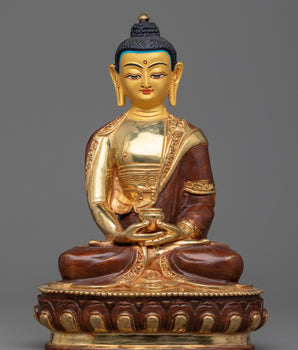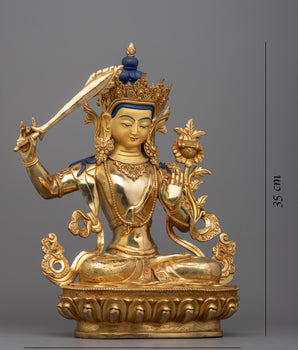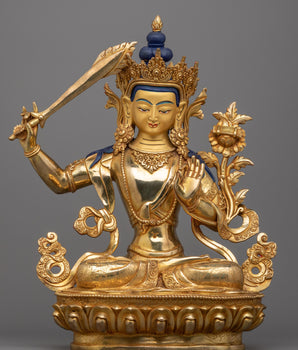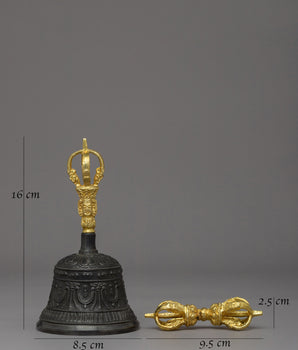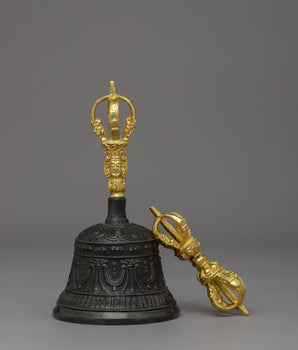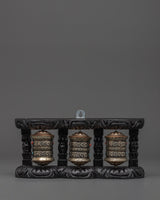
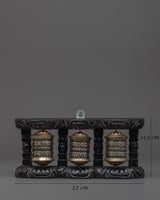
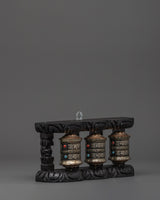

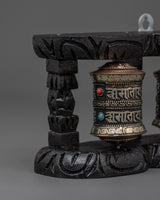

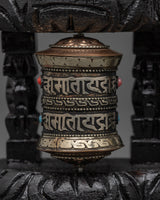
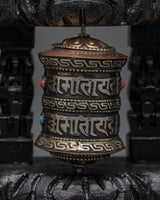
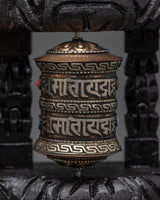
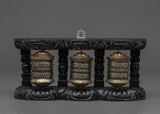
3-Piece Buddhist Prayer Wheel | Traditional Tibetan Mantra Spinners

100% AUTHENTIC

HANDMADE

FREE SHIPPING
3-Piece Buddhist Prayer Wheel | Tibetan Buddhist Artifact for Home or Shrine
--------------------------------------------------------
Size: 11.5cm (Height) x 22cm (Width)
Weight: 0.29kg
Materials: Copper Body, Brass Body, White Metal, Wooden Frame
--------------------------------------------------------
About our Prayer Wheel
This 3-piece prayer wheel set is crafted with the ancient Buddhist mantra "Om Mani Padme Hum" inscribed on each of its turning wheels. This work weighs 0.29 kg and measures 11.5 cm in height by 22 cm in width. It is constructed of copper, brass, white metal, and a carved wooden frame. It makes an excellent practical spiritual tool or a significant piece of art for home altars, meditation areas, and yoga studios.
Each wheel is fixed on a dark wooden frame, enhancing the overall authenticity and natural charm. The exquisite inscriptions are gracefully complemented by subtle accents, which symbolize prayers for compassion, knowledge, and peace. It is believed that turning the wheels produces the same benefits as chanting the mantra, bringing optimism and spiritual protection to any space.
Introduction to Prayer Wheel
A prayer wheel is cylindrical on a spindle and is used in Tibetan Buddhism. It is typically inscribed with the mantra "Om Mani Padme Hum" and rotated by hand as a form of spiritual practice and to accumulate merit. Spinning the wheel is believed to have the same spiritual benefits as verbally reciting the mantra. The use of prayer wheels is widespread in Tibetan Buddhism and has spread to other cultures.
How does the Buddhist Prayer Wheel benefit us?
The benefits associated with rotating the wheel are numerous. It promotes knowledge, compassion, and bodhicitta in the practitioner and improves siddhis (spiritual powers such as clairvoyance, precognition, etc.). The practitioner can repeat the mantra as often as possible while the wheel is rolling, maintaining a calm, meditative attitude. A Tibetan Buddhist tradition holds that after a practice session, one should dedicate any acquired merits to the benefit of all sentient beings. Then three times Om Ah Hum. This is usually among Tibetans after finishing any Buddhist practice, including the prayer wheel exercise.
How do you set up your own Buddhist Shrine?
• Find a clean, quiet, and uncluttered spot
• Set up an altar table and cover it with an altar cloth that calls to you
• Place your sacred item at the center















